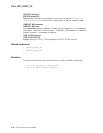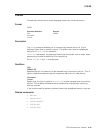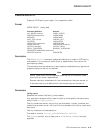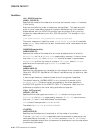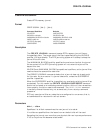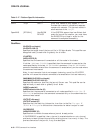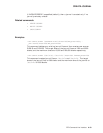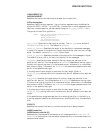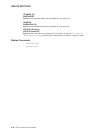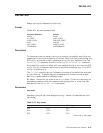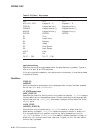
CREATE JOURNAL
CREATE JOURNAL
Create RTR’s recovery journal.
Format
CREATE JOURNAL [disk-1] ... [,disk-n]
Command Qualifiers Defaults
/CLUSTER /NOCLUSTER
/BLOCKS=nr-blocks /BLOCKS=1000
/MAXIMUM_BLOCKS=nr-blocks /MAXIMUM_BLOCKS=1000
/NODE=node-list /NODE=default-node-list
/OUTPUT[=file-spec] /OUTPUT=stdout
/SUPERSEDE /NOSUPERSEDE
Description
The CREATE JOURNAL command creates RTR’s recovery journal files on
the specified disks. The target size of the files is specified using the /BLOCKS
qualifier (512 byte blocks). The RTR journaling system will attempt to keep the
journal file to this size.
The /MAXIMUM_BLOCKS qualifier specifies the maximum size that the journal
file can extend to; the RTR journaling system will not extend the journal file
beyond this size.
/BLOCKS and /MAXIMUM_BLOCKS are positional qualifiers, so the journal files
need not have the same size on each disk.
The CREATE JOURNAL command checks that a journal does not already exist
for the node. An error occurs if a journal does exist, unless the /SUPERSEDE
qualifier is specified.
When the /SUPERSEDE qualifier is specified, any previously existing journal files
are deleted. For this reason the CREATE JOURNAL/SUPERSEDE command
should not be issued on a node being started up after a failure if the transactions
interrupted by the failure need to be recovered. The
CREATE JOURNAL
command
is normally entered interactively, not automatically from a startup command
procedure.
RTR only uses journal files on nodes that are configured to run servers, that is,
on backends and on routers with call-out servers.
Parameters
disk-1, ... disk-n
Specifies a list of disk names where the new journal is to reside.
If no disks are specified then the issuer’s current default disk will be used.
Spreading the journal over more than one physical disk can improve performance
if I/O to the journal file becomes a bottleneck.
RTR Command Line Interface 6–51




